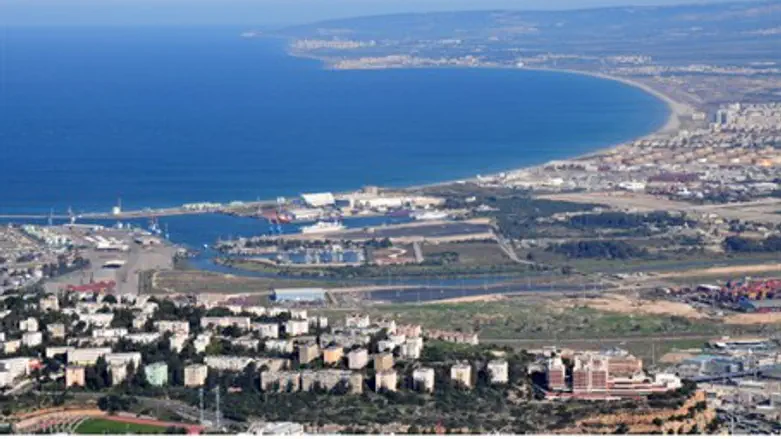
A geophysics research team from Haifa University has discovered a series of active gas springs on the sea floor under Haifa Bay.
According to Dr. Uri Schattner, head of the university's Department of Marine Geosciences at the Leon H. Charney School of Marine Sciences, “Geophysical information enables us to research beneath the sea floor and map out the entire system, from the gas sources to the penetration of the sea waters.”
The gas springs discovered by Schattner's team were found at relatively shallow depths, only a few dozen meters below the surface. The findings, published in the journal Continental Shelf Research, described the entire system, from its sources under the sea floor through the natural springs emerging from the seabed.
"This is a natural laboratory for researching as emissions from the sea floor, natural springs and less natural ones,” Schattner said. “We are only beginning to understand their contribution to climate and ecological change.”
The first evidence of gas springs emerged from examining a map of the sea floor off Israel's northern coast. A joint effort between the University of Haifa and the Israel Oceanographic and Limnological Research institute revealed no less than 700 spots in the seabed that looked like possible gas springs, Schattner said.
The researchers' suspicions intensified when seismic data identified pockets of gas beneath the seabed. “Based on this evidence, the researchers went out to sea four times to collect more data from the seabed and from under the sea floor. Geophysical information enables us to research beneath the sea floor and map out the entire system, from the gas sources to their penetration of the sea waters,” Schattner said.
What they found, however, exceeded all expectations: A gas deposit of 72 square kilometers on the continental shelf, at depths of between 37 meters to 112 meters. While many of the gases remain in the reserve, some still manage to escape into the sea.
"We don't know yet what kind of gas we're talking about, but its role in undermining the stability of the seabed is clear,” warned Dr. Michael Lazar, a member of the research team. “This means that any discussion of marine infrastructure development must seriously relate to this shallow gas stratus.”
Israel's Energy and Water Ministry is expending a great deal of effort on formulating National Master Plan 37H, which deals with the transportation of gas produced from deep sea drilling to pressure-reducing facilities. These will be located on the continental shelf, in the sea, from where the gas will be transported to the coast, noted the researchers.
"Now we are beginning to understand that there is no substitute for thoroughly researching the stability of the sea floor to prevent an infrastructure failure, since any leak could cause an ecological disaster,” Schattner pointed out.
During the coming months, the researchers plan another expedition to the gas springs, this time with a team of biologists and geologists to get a better idea of the type of gas involved and its influence on marine life near the sea floor.
“This time we'll be going out with a few vessels, each of which is dedicated to different types of surveying and sampling,” Schattner said. "Every research trip challenges and fascinates us anew.”